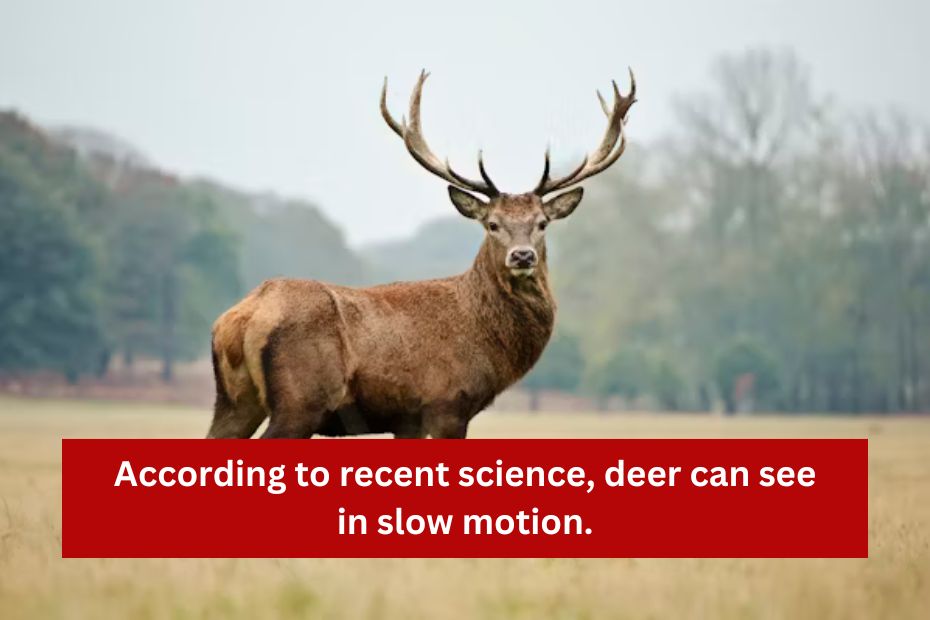A doe was forced up the open ridge and straight toward my tree stand by a tall, heavy 8-point buck. Three satellite bucks circled and sniffed the air, but the larger buck’s presence prevented them from getting within 20 yards of the doe. Although we were separated by seventy yards of open woods, the doe was moving quickly and was about to cross the ridge top saddle where I had been waiting since before dawn. I snatched up my bow and swung my camera to record the action, as I had only seconds to be ready for a certain chip shot. But I acted too hastily. Even though a lot of time has gone by since that morning’s hunt, the thought of that doe stealing from me and taking that buck away from me forever still hurts.
In addition to teaching me some valuable lessons, seeing that dream crash and burn made me question how well whitetails can truly perceive movement. I recently posed that query to one of the leading deer researchers in the nation. In actuality, the response and its consequences for hunters are worse than I had anticipated: Deer have slow-motion vision.
The Most Recent Research on Deer Vision
I spoke with Dr. Karl Miller, a well-known research scientist and former professor at the UGA Deer Lab, last year. He raised the issue of crucial flicker frequency, or flicker fusion rates (FF). The ability of an animal to comprehend visual information in a single location—known as temporal resolution—is determined by its FF rates. The frequency at which a flashing light seems to become steady is used to measure it. A species’ ability to visually digest more information per second increases with its FF rate. Several animal experiments have demonstrated that high FF rates boost an animal’s ability to identify the nature, direction, and velocity of a moving item by reducing the likelihood of blurring. The ability to recognize threats and act swiftly to protect their hides is just what a prey species, such as a whitetail deer, needs to thrive in a world full of deadly predators with fangs, bows, and bullets.
In well-lit situations, the typical rate for humans is about 60 Hz. Recent research suggests that it could reach 120 Hz for deer. Deer’s ability to see motion is “up to four times ours,” according to Miller, when you combine this with the fact that they are crepuscular, meaning they move most during twilight, and that their eyes are specially made to see in these low light conditions. In contrast to our time, they are essentially witnessing up to four subjective moments of reality each unit of time. They are essentially witnessing in slow motion, to put it another way. Deer clearly have an advantage because of this, and any movement we make is much exaggerated to them in comparison to how we see it.
The Implications for Hunters
According to the most recent research, it’s more crucial than ever to go stealthily to your stance and to remain motionless once you’re there. (Image: Mathews)
The majority of us learned to “just sit still” from our fathers, grandfathers, or other role models. Although it is still excellent advice, it makes sense to be more aware of unnecessary movement than ever before given our current understanding of deer eyesight. Here are six strategies and reminders to help you be more covert than you were in 2025.
Make Friends with Obstacles
Sometimes you have to move, as when you’re putting on a stalk, changing positions, or walking to and from young stands. Going where no one can see you is, of course, the best method to remain invisible. That is, behind brush, fallen trees, berms, slopes, vegetation screens, etc. Prior to the 2025 season, it can be quite beneficial to reevaluate the routes to your existing stands, carefully design routes to new ones, and plant screening plants next to stands. To stay hidden behind these obstacles, you man must walk a longer distance or take a more circuitous route to your stand, but it will be worthwhile when you punch your tag.
Continue to Hunt Your Position
According to scientists, it can also be beneficial to move more slowly by up to two or four times if you are unable to employ a barrier. Consider it as stalking or still-hunting to your blind or stand, and when possible, use the wind to conceal your movements. Give yourself more time and attempt to move only when the grasses, trees, and leaves move.
Put down your gear
I’ve hung up the camera and returned to the fundamentals. Eliminating equipment that causes you to move more than is necessary will reduce your risk of being caught. Since this is the greatest movement a hunter would usually make in close proximity to deer, pay special attention to the motion you make when you are getting ready to shoot. If you are an archery hunter and find it difficult to draw your bow back slowly and effortlessly, you should think about lowering a few pounds of draw weight.
Strengthen Your Cover
Consider strategies to use more cover to conceal necessary motion when hunting in a tree stand or ground blind. Look for trees with lots of branches and, if necessary, add your own. I’m prone to choosing wide-open trees for stands. Choose a ground blind that blends in nicely and keep the windows open as little as possible to get a clear shot if you are unable to locate a tree with enough cover.
Examine Your Camo
Whitetails’ inability to discern minute details is another aspect of their vision. Therefore, the purpose of camouflage is to usually break up your silhouette rather than to seem exactly like leaves or limbs. This is accomplished far more effectively by clothing with huge macro camo patterns of contrasting hues and shades than by uniformly colored clothing, which tends to “blob up” from a distance and makes a hunter stand out. Take stock of your equipment and think about upgrading those outdated micro patterns.
Set Higher Goals
Whitetail scientists would also advise climbing higher if you were going to be in a tree. Going a few feet higher can effectively put you out of range of deer’s slow-motion detectors because they have poor vertical vision without turning their heads.
The astute hunter must see the world through the eyes of a whitetail. A whitetail’s apparent ability to see in slow motion can help any hunter avoid crucial mistakes, but it won’t bring back my favorite buck waltzing memories.

